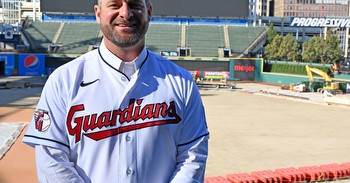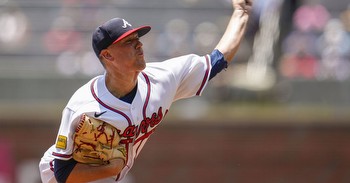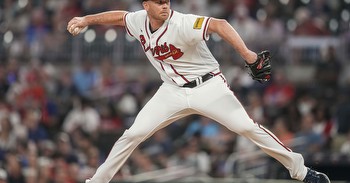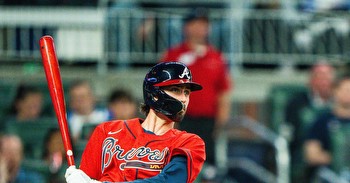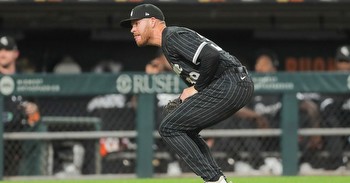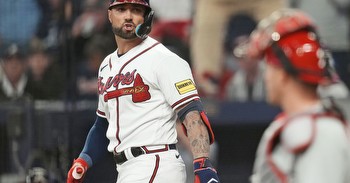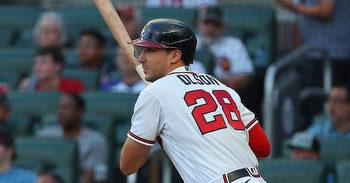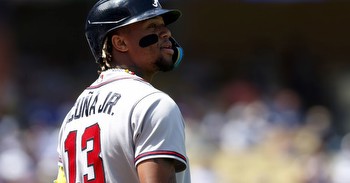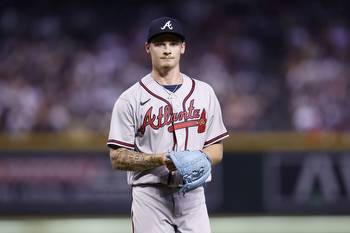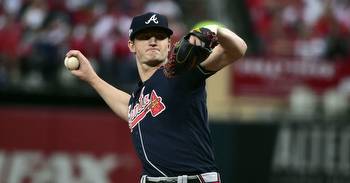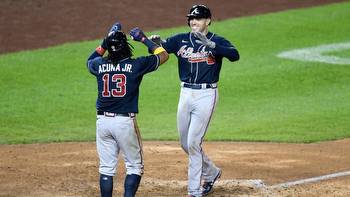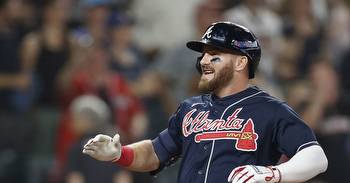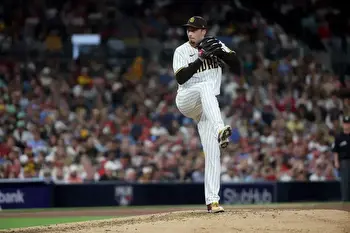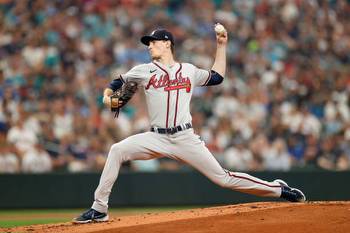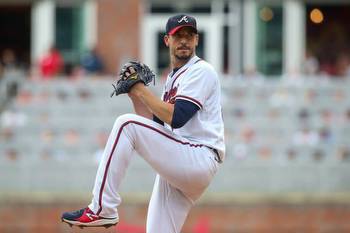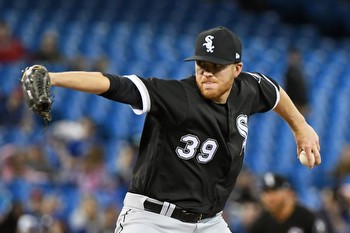2023 Atlanta Braves Season In Review: Michael Soroka
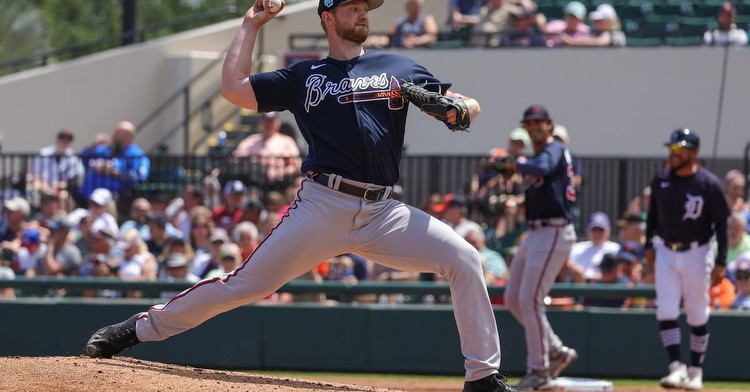
The Atlanta Braves are officially in offseason mode now that free agency, and it is no secret that starting pitching is most likely a target.
One player that seemed like he may have been part the mix was Michael Soroka. Just the fact that he was able to come back after the terrible luck with injuries he had speaks to his tenacity. The question early in the offseason was “will he play a factor for the Braves in the future?” Turns out that the answer is no, as Soroka was traded to the White Sox on November 17.
How Acquired
Soroka was drafted by the Atlanta Braves with the 28th overall pick in 2015, the second pitcher drafted that year by the Braves. Drafted out of Bishop Carroll High School in Alberta, Canada, Soroka made quick work of the minor leagues and made his debut on May 1, 2018.
What were the expectations?
There were multiple ways to look at expectations for Soroka in 2023.
There was the unrealistic, but hopeful, approach that he would come back and be his former self: in 214 career innings spanning parts of three seasons, he had a 65 ERA-, 78 FIP-, and 88 xFIP-, along with 4.9 total fWAR. Most of that was accrued in 2019, where he totaled 4.0 fWAR across 174 ⁄3 innings.
On the flip side was the reality that Soroka hadn’t thrown a major league pitch since 2020, and had only made six minor league starts since going down with injury. Given the long road ahead of him, expecting him to once again throw zero major league innings was perfectly valid. If he got back enough to be able to take a major league mound, great! If not, the odds weren’t necessarily with him, anyway.
2023 Results
It was hard to predict what Soroka would bring to the table at the major league level, but the fanfare that came along with his return was a fun ride in 2023. Soroka was called back up May 29 to face the Athletics in Oakland. Just the fact that he had not pitched in the majors since August 3, 2020, and was able to make it back, was impressive in and of itself.
Was that first start back impressive? Again, it depends on your expectations. Against a pretty weak lineup, Soroka managed a 3/2 K/BB ratio and allowed a homer in six innings of work. Unsurprisingly (welcome back to the Braves, Michael!), the actual damage was done to Soroka on a three-run homer hit by the 20th batter he faced. He followed that up by getting shelled by the Diamondbacks, and then was sent back to Triple-A Gwinnett.
After toiling in Gwinnett for about a month, it turned out that Soroka’s first start in Atlanta was a lot of fun. Though Soroka yielded two homers, he had a stellar 6/0 K/BB ratio, and the Braves beat the Marlins 16-4. Soroka then stuck around for two more starts and a long relief appearance, and his line was a mixed bag: 93 ERA-, 119 FIP-, 93 xFIP- in 19 ⁄3 combined innings. He then returned to Gwinnett once again, until coming up and making another mixed bag start against the Cardinals. He was then shut down with concerns about his forearm.
Overall, Soroka’s results were not good in his limited MLB action. In 32 ⁄3 total innings, he managed a 144 ERA-, 152 FIP-, and 107 xFIP-. While the xFIP- suggests he could already potentially serve as a back-of-the-rotation starter somewhere, his results were gnarly enough to earn him -0.4 fWAR. (The xERA was somewhere between his xFIP and ERA/FIP, and not good, either.)
What went right?
Other than simply pointing to the one start against Miami that was mentioned earlier, not all of Soroka’s inputs were problematic. For example, he did a solid job of limiting hard contact in terms of hard-hit rate and average exit velocity. However, his barrel rate against and xwOBACON were elevated, which really meant that he got a lot of really weak contact, and also got blasted more often than average.
Moreover, Soroka’s xFIP for the year was already in the backend starter range, despite his circumstances. Maybe the accumulation of various injuries upends even that modest part of his line in the future, but there was at least a glimmer of hope for him in terms of peripherals. He’s got something to build off of, for sure, but it won’t be for the Braves, at least in the immediate future.
Of course, all of this kind of pales in comparison to the idea that the main thing that went right is that Soroka recovered from all of his injuries woes to pitch in the major leagues again. That’s the real story here.
That said, a couple of other nice moments are worth highlighting. Soroka’s results were brutal, and more brutal than his inputs, in many of his outings. But after that game against the Marlins, fortune smiled on him in Cleveland. Despite a 4/3 K/BB ratio, Soroka threw 4 ⁄3 scoreless in that game. It was the only outing of his season where his results (FIP, and also ERA) were better than his peripherals (xFIP), and it was cool to see fortune smile on him at least once.
Also cool: tell me your heart didn’t feel the warm-and-fuzzies when a vintage Soroka moment happened in first game back? This one, that is:
Michael Soroka, back in the majors, preserving a one-run lead by getting a left-handed batter to pull a way-outside changeup on 0-2 and hit into a 4-6-3 double play? It was the promise of a glorious dream that may be deferred if not indefinitely shelved.
What went wrong?
In limited action, pretty much everything outside of what was mentioned in the “what went right” section. His xERA, chase rate, whiff rate, strikeout rate, walk rate, and barrel rate were all well below league average. He gave up a ton of homers. He hit four batters; those four HBP are equal to a third of his career total now, and he did it in just over 10 percent of his career innings.
One of Soroka’s biggest issues, which was evident from start to start, is that his reworked mechanics left him devoid of an identity or a specific approach towards getting batters out. The “old” Soroka had extreme sink on his fastballs and a sharply-dropping slider. The new Soroka couldn’t generate sink on his fastballs anymore, and transitioned to having his four-seamer be his primary offering over the course of the season. His command was actually pretty good with the four-seamer and slider, which is perhaps surprising or perhaps not, but having to relearn to how to attack batters without the benefit of his bread-and-butter sinker offering doing what it used to was clearly a trying experience. Over his last four outings, where he started phasing out his sinker, his xFIP- was 104; however, his four-seamer was still getting crushed too often.
Soroka’s worst outing came before all of that, though — it was his second start of the year, in Arizona. He just didn’t have anything in this one, giving up two homers and finishing with a miserable 2/4 K/BB ratio in 3 ⁄3 innings, and then getting sent back to down to Gwinnett afterwards. The aftermath of that start arguably started the pitch mix transition to something that worked better with his new mechanics; the only real good part of that game was that the Braves still won, 8-5.
Here’s Soroka giving up a homer to Ketel Marte in that game — for whatever reason, he hadn’t thrown Marte a single sinker in the prior two PAs despite still using it heavily in this start, and after throwing four straight four-seamers to get an out in the prior inning, Marte was ready for this one, which was not terribly-placed but nowhere near elevated:
Needless to say, as much as most of us hope he can turn things around and be the pitcher we saw in 2019, it simply was not the case this past season.
2024 Outlook
Mike Soroka is a Super Two player, and so he will be entering his fourth year of arbitration eligibility this offseason. According to MLB Trade Rumors, he is projected to make approximately $3MM if the White Sox choose to tender him a contract, which it seems like they will given their post-trade statements.
Had Soroka not been traded to the White Sox, he was someone you would have loved to see come back, but from a business standpoint he most likely would have been a non-tender candidate. Prior to the trade, one could have said “the Braves have waited this long, so the Braves may see it through this season before he becomes a free agent”. However, all of this was answered when he was shipped to the White Sox.
Here is to hoping he can figure things out and be a solid part of the White Sox rotation. Even though he is on another team, he is the type of player that is hard not to root for. With the White Sox not being in contention mode, Soroka has a legitimate chance to log a boatload of innings in their rotation, provided he stays healthy. Although Soroka may be sad to leave his teammates, he most assuredly is happy for the opportunity to be able to pitch more before he hits free agency in 2025.
Projections-wise, Steamer has him at 1.2 WAR in 118 innings at this point in the offseason. That’s basically an average rate of WAR accumulation for a starter, though that innings total suggests a lack of bulk given his extensive injury history. It’s really hard to project Soroka, though — with seven poor appearances in 2023, 17 so-so outings at Triple-A last year, and not much before then for quite a while, he’s certainly a weird case with massive error bars.

